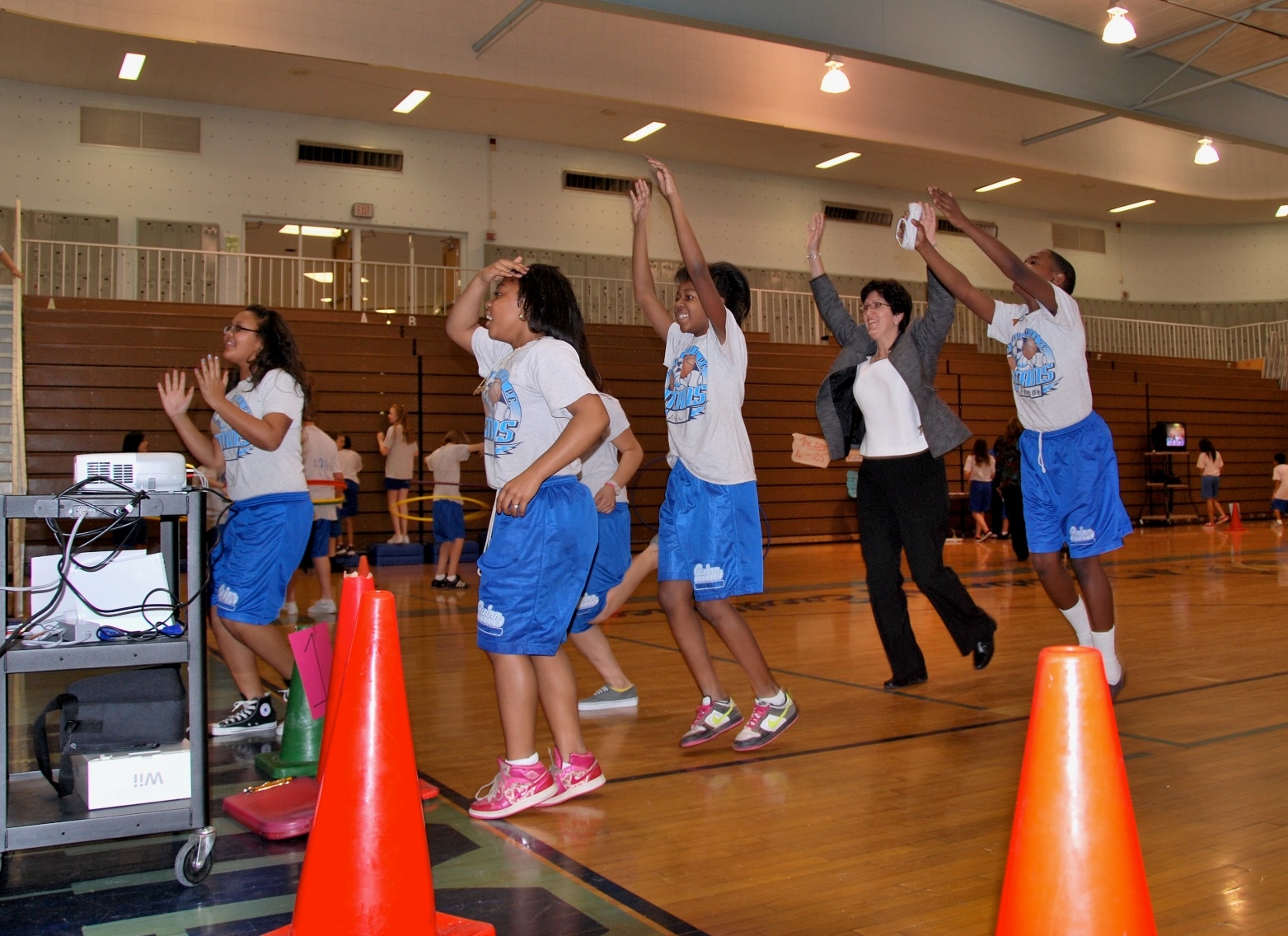By PCFSN

Earlier this month, I had the privilege of attending one of the largest electronics shows in the world—the Consumer Electronics Show (CES) in Las Vegas, Nevada and experiencing the latest and greatest in active gaming. While we often associate technology with sedentary living as we text, email, or watch a screen, it can also be a tool for good. Active gaming is one way technology can encourage and promote physical activity and meet youth and adults wherever they are on the ability spectrum.
The Healthy People 2020 physical activity objectives include measures for screen time with the goal of limiting television or video game exposure to no more than 2 hours a day for youth ages 2-18 years old. However, that does not mean that the allotted 2 hours cannot include some active gaming—like active options that may be part of a comprehensive physical education curriculum.
Before attending CES I had an opportunity to see first-hand how active gaming can play a role in physical education at Kenny Guinn Middle School. Nestled within the 5th largest school district in the Nation, their physical education classes use active gaming as a way to help integrate special needs students with their peers. When the teacher asked who was excited to do some active gaming, everyone yelled “Me!” As the students rotated through the stations, I had the opportunity to work out with them. Very soon I realized that I couldn’t tell who was ‘challenged’ or not. To me they were all excited kids being active…jumping, kicking, and punching. No one was singled out or separated and each student participated to the best of their ability. And not only were they doing active gaming but they also learned about body mass index (BMI) by using bio impedence machines and ipods.
Keeping a level playing field is important as we work towards meeting the goals outlined in Healthy People 2020. Active gaming is a great way to meet youth where they are and is a fun way to promote sustained movement regardless of one’s age, fitness level or ability. After all, if my 88-year-old grandmother can play a bowling videogame and love it, I know I can too!
So, what is your favorite active game? And where do you see fitness technology taking us in the future?
**Image Caption: Shellie Pfohl, Executive Director of the President’s Council on Fitness, Sports & Nutrition getting her daily dose of physical activity the active gaming way with the students of Kenny Guinn Middle School, Las Vegas, NV.